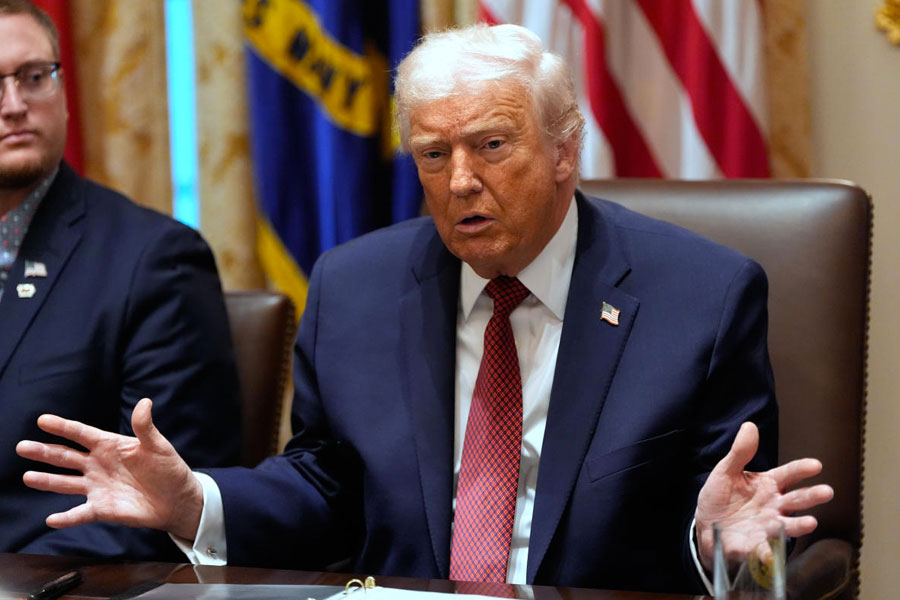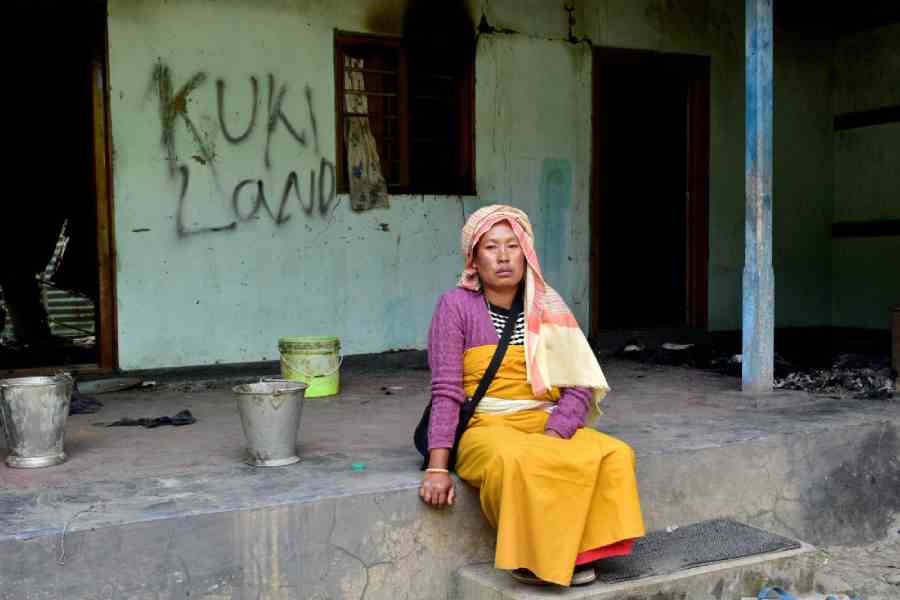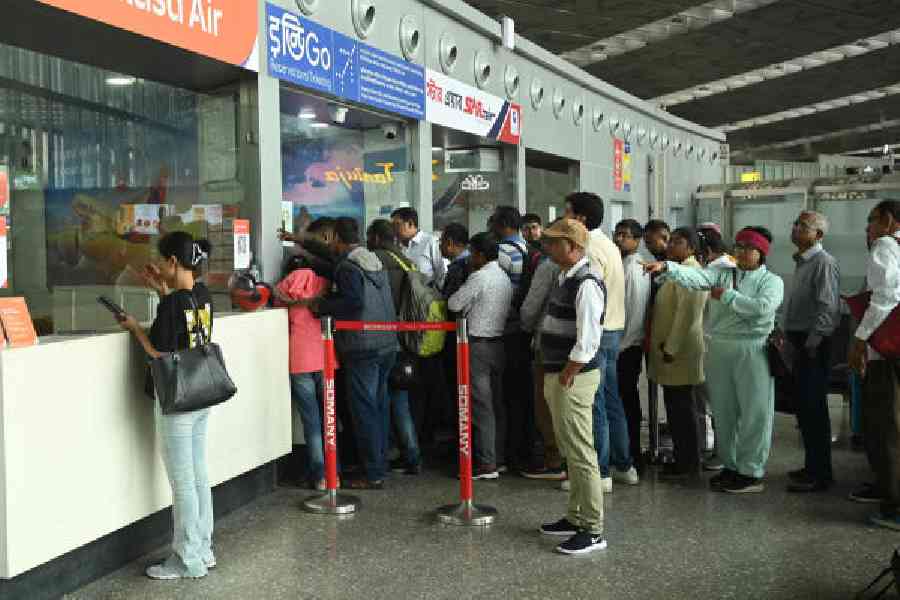|
|
| Some more, please |
In Satyajit Ray’s film, Aparajito, an inspector comes on a visit to a village school and asks a class the meaning of a Bengali word. The incident turns out to be serendipitous for young Apu: not only does he give the correct answer, but his moving rendition from a primer also pleases the headmaster.
Such scenes are a thing of the sepia-tinted past, although our state-run school education system has inspectors in every district and circle. In the absence of a quality check on the learning of school students, all the debates on the health — or ill-health — of elementary education in our country revolve almost solely around quantitative aspects: enrolment and drop-out statistics, classrooms per school, toilet and drinking water facilities or mid-day meals. In this context, the publication of Annual Survey of Education Report 2008 by Pratham, on the reading ability and mathematical skills of India’s school-going children, is very significant.
Pratham, a charitable trust supported by corporate bodies and a private sector bank, has been doing this commendable job for the last few years and the survey was one of the most extensive: it covered 564 out of 583 districts in the country, involved 20,000 volunteers and a sample size of 7,00,000 children. The findings of the report, not unexpectedly, are rather grim: four out of 10 Class I students could not identify letters, while three out of 10 Class VI students could not read from a Class II textbook. Their mathematical skills were no better. But what is more worrying is that during the last few years, there seems to have been a downslide in our schoolchildren’s basic 3Rs skills. Thus, in West Bengal for example, Class V students who could read from a Class II textbook were between 65-75 per cent in the last two years; in this year’s report, the figure is below 55 per cent. So the pertinent question that the report asks about the school education system is: is it working?
Before hazarding an answer, the three following facts need to be considered. Sarva Siksha Abhiyan and the mid-day meal scheme, targeted at 21 crore children of elementary school age, are the biggest such government-sponsored programmes launched anywhere in the world. During the last five years, the Central and state governments have spent more than Rs 36,000 crore on these schemes which, though much less than is required, is a large sum. And, for the first time in history, 95.7 per cent of six to 14-year-old children in India are enrolled in school.
What ails the system then? Why is the quality of learning so poor among a large section of students? Why do half of them (49 per cent according to official data) drop out before they complete the elementary stage?
The responses vary. Some, including a section of teachers, blame the mid-day meal scheme for turning the primary schools into soup kitchens; others point to the misuse of funds and corruption; still others blame ‘politics’ infecting the whole system. The loudest responses often have a middle-class, even elitist, slant and an entrenched cynicism about the state-run education system. That has translated into a drift away from state-funded to private schools. The phenomenon is not restricted to urban areas; ASER 2008 notes that 22.5 per cent of children go to private schools and the proportion is growing. This has imparted force to the question, has the government failed to provide quality education to the country’s children?
This is a legitimate question, but it may mask other less audible but more premeditated ones: why should we pay education cess for such an expensive and ineffectual programme like SSA? Shouldn’t the government spend more on security and leave health and education to private players?
Corporate billionaires’ social responsibility is fine. Giving a laptop to every child without a classroom or blackboard is also an excellent idea. NGOs setting up informal schools for underprivileged children cannot be welcomed more. But here we are talking about 21 crore children, more than the total population of Australia. One-third of them lives below the poverty line, another third comes from ‘capability poor’ families, lacking the health and literacy required to make use of welfare schemes. No amount of private initiative or corporate goodwill can replace the State’s commitment to provide these sections with formal, quality education. The good news is that, thanks to the massive state-funded schemes launched around the beginning of this millennium, the enrolment figure at the elementary level has touched a new high. Even a state like Bihar has shown impressive improvement on this score. The bad news is that a large proportion of enrolled children are not getting quality education and are dropping out.
Bad news creates a tendency to see the problem in isolation, not as part of the larger story. When we fret over the percentage of students who cannot read an elementary-level text or do a simple sum, we often fail to see that many of them have illiterate parents, or have never been to an anganwadi pre-school. Many have not been covered by the immunization programme, and a bout of measles can make them unlearn everything or drop out. The same thing happens when their landless parents migrate for seasonal work, or when their kutcha houses are ruined by the annual floods. Success in universal primary education depends on effective implementation of the Integrated Child Development Scheme, the National Rural Health Mission, the National Rural Employment Guarantee Act, Indira Awas Yojana and a host of other schemes.
In Ray’s Aparajito, the school inspector took a sample test by asking a question to students sitting in the front row. Apu was only the second boy to whom the official turned. Although poor, Apu was the son of a Brahmin scholar. Had the inspector begun by asking students in the back rows, he may have elicited a different idea of the school’s standard. Things have not changed much since then. Inequities exist, within the classroom and outside, within the village, the block, the district and the state. Thus, the most backward students are to be found in schools in the most inaccessible parts of the block or district, without electricity or safe drinking water, where teachers are habitually absent and the disbursement of mid-day meal funds most irregular.
But who will speak on their behalf? Do we need a Lalgarh-like uprising to learn that a village school had been turned into a police camp? Perhaps contrary to popular middle-class perception, we need a little more politics here. During the last four years, only three per cent of all the words uttered in Parliament were related to child welfare. But since a child does not have a right to vote, three-fourth of anganwadi funds return unspent from our state while politicians remain busy with more important things like the nuclear deal or two-stroke autorickshaws.











